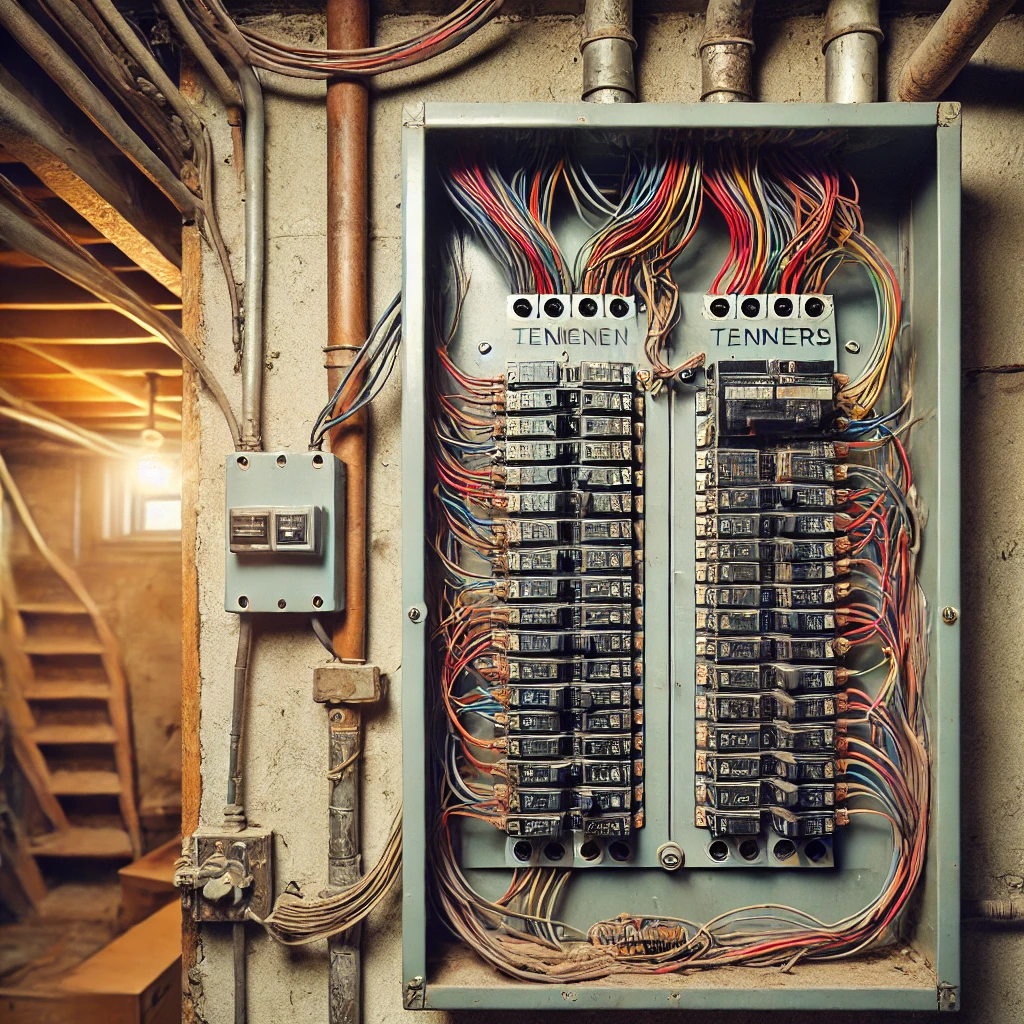The 45-year-old subpanel equipped with tandem breaker capabilities marks a notable point in the development of residential electrical systems. Originally engineered to increase the circuit capacity of homes without enlarging the physical size of the panel, these 45 year old subpanel capable of tandem Breaker have been in operation for nearly half a century. As time has passed, the rising standards in electrical safety and the ever-increasing power requirements of modern appliances have brought the adequacy and safety of such aging systems into question.
Tandem breakers, often referred to as cheater breakers, were a solution for adding additional circuits in the constrained spaces of older electrical panels. This feature greatly benefited homes built with limited panel slots and moderate power needs. While these older subpanels managed past electrical demands adeptly, the electrical consumption patterns have dramatically evolved due to contemporary technology and appliances.
45 Year Old Subpanel Capable of Tandem Breaker: Safety and Compliance Concerns with Aging Subpanels
One major concern regarding these aging subpanels is their compliance with current electrical safety codes. Many older systems lack modern safety features such as AFCI (Arc Fault Circuit Interrupters) and GFCI (Ground Fault Circuit Interrupters), now standard in new installations to safeguard against electrical fires and shocks. Additionally, the physical deterioration—manifesting as rust, wear and tear, and obsolete components—can pose significant safety hazards.
Regular evaluations by certified electricians are crucial for these older systems. Such inspections help pinpoint potential problems like overloaded circuits, inappropriate breaker usage, and deteriorated electrical insulation, all of which pose severe risks. Maintenance efforts might include tightening electrical connections, replacing old breakers, or cleaning the panel interior to maintain operational safety.
Upgrading Old Subpanels: A Modern Necessity
Experts often recommend that homeowners with a 45-year-old subpanel that accommodates tandem breakers upgrade to a contemporary panel. Modern panels not only adhere to stringent safety codes but also support additional circuits and enhanced capacity, vital for today’s energy-intensive environments. Upgrading offers an opportunity to incorporate energy-efficient solutions and smart monitoring systems, optimizing household energy management.
Deciding between retrofitting an existing subpanel or completely replacing it hinges on several factors, including the panel’s current state, the home’s electrical requirements, and plans for future expansion. Although retrofitting may initially seem cost-effective, installing a new panel provides improved reliability, safety, and compliance with modern electrical standards.
As households continue to integrate high-powered devices and smart technology, the electrical demand significantly escalates. An old subpanel using tandem breakers may not efficiently manage such increases. The designers of these vintage models did not foresee the power needs of contemporary devices like large HVAC systems, electric vehicles, or home automation systems, which could easily overwhelm an outdated electrical panel.
The risk of overloading an older electrical system remains high, particularly if the panel still utilizes original tandem breakers. These systems are less capable of handling the rapid power surges typical of modern devices, potentially leading to tripped breakers, power outages, or even hazardous electrical fires. Upgrading to a modern panel with appropriately rated breakers and expanded capacity can significantly reduce these risks, ensuring safe and efficient electrical distribution.
45 Year Old Subpanel Capable of Tandem Breaker: Historical Value vs. Safety and Efficiency
While some homeowners may appreciate the historical integrity of their home’s original features, including old electrical panels, they must not compromise safety and functionality. Even with a desire to preserve a home’s aesthetic or original architecture, it is critical to consider retrofitting or replacing outdated and potentially dangerous systems like old electrical panels to protect the dwelling and its occupants.
45 Year Old Subpanel Capable of Tandem Breaker: Environmental Benefits of Upgrading
Replacing an aged subpanel not only boosts safety but also promotes environmental sustainability. Designers make modern electrical panels more energy-efficient and better at minimizing phantom loads—the power many devices continue to consume even when off. By transitioning to a newer system, homeowners can reduce their environmental impact and support broader energy conservation initiatives, aligning with global sustainability goals.
Enhancing Home Value with Electrical Upgrades
- Increased Property Appeal: Upgrading an old subpanel enhances the appeal of a home to potential buyers who value safety and modern conveniences.
- Future-Proofing: Modern electrical panels can handle upgrades and additions to the home, making it future-ready.
- Insurance Benefits: Some insurers offer lower premiums for homes with updated electrical systems, recognizing the reduced risk of electrical failures.
Upgrading an outdated subpanel can significantly increase a home’s market value. Prospective homeowners often seek properties that won’t require immediate, costly upgrades, making a modern electrical system a strong selling point. Furthermore, enhanced safety features reduce the risk of electrical incidents, potentially lowering insurance costs and making the home more attractive to cautious buyers.
Sustainable Living Through Electrical Efficiency
- Reducing Energy Waste: Modern panels improve energy efficiency, reducing unnecessary power usage.
- Support for Renewable Energy: New panels often facilitate the integration of renewable energy sources, like solar panels.
- Tax Incentives and Rebates: Many regions offer incentives for energy-efficient upgrades, which can help offset the initial cost.
By updating an old subpanel, homeowners not only increase safety but also contribute to a more sustainable lifestyle. Modern electrical panels are more adept at managing energy flow and can easily integrate with renewable energy sources. This transition not only helps in reducing overall energy consumption but also positions homeowners to take advantage of tax rebates and incentives for green upgrades.
The Risk Management Perspective
- Preventing Electrical Hazards: New panels reduce the risk of fires and electrical shocks.
- Compliance with Codes: Upgrades ensure that electrical systems meet current safety codes.
- Long-Term Cost Savings: Avoiding potential damage from outdated systems can save money on repairs and replacements.
Upgrading from a 45-year-old subpanel to a modern system significantly diminishes the risk of electrical hazards. Compliance with current electrical codes enhances safety, and the robust new systems are less prone to issues that could lead to costly repairs or catastrophic failures. This proactive approach in risk management is crucial for the longevity and safety of the home’s electrical infrastructure.
Conclusion
Embracing modern electrical solutions by upgrading old subpanels is essential for safety, efficiency, and sustainability. While the initial investment may seem substantial, the long-term benefits of reliability, reduced energy consumption, and increased property value provide substantial returns. Upgrading ensures homes meet contemporary standards and prepare for future electrical demands, making it a wise and necessary decision for any homeowner.

